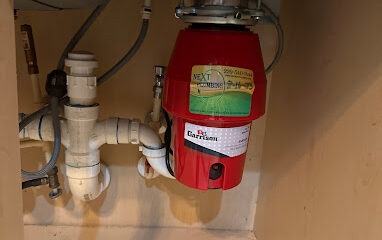How to Unclog a Sink
A clogged sink drain can happen to anyone, anytime (usually just before company arrives) and isn’t much fun! There are a few basic steps you should follow to get the drain unclogged. Don’t start with a chemical drain opener. This might seem like the easiest way to tackle a clogged drain but the fact is, most chemicals strong enough to take on a clog can do a heck of a lot of damage to your hands, face or whatever they come in contact with, so try your other options first.
A plunger, commonly called a plumber’s friend, can often clear up the problem. Plug up the overflow hole if there is one. If you’re working on a double sink, block the other drain with a stopper or wet rag for more suction power. A thin layer of petroleum jelly around the base of the rubber plunger will also help give you a tighter fit and better suction power.
You should also have enough water in the sink to cover the base of the plunger. Usually this isn’t’t a problem because the sink is likely to be overflowing. Place the plunger over the drain and push down. Pull back up just a little and repeat 10 to 15 times. You can feel the force on the down stroke and the suction on the up stroke. Then pull up quickly. If all goes well, the water will go swooshing down the drain. You can do this as many times as you want, but if it doesn’t’t work after the first few times, it’s probably not going to.
Even if this doesn’t’t work, it’s good exercise! Every sink will also have a trap, which is a “U” shaped drain, located directly under the sink. Bail any water out of the sink and then put a bucket under the trap. Remove the trap by loosening the slip-nuts that hold it on tight. If your trap has a clean-out plug at the bottom of the “U,” you can just remove this plug and get at the clog through there.
If the clog is farther down the line, you can use an auger or snake to clean the pipe out. You can go at it from the drain, or, if the trap is off, start there. If you still can’t get at the clog, close up the trap and try the chemical drain opener. To prevent drains from clogging, try this formula once a month. Mix together 1 cup of salt, 1 cup of baking soda and a quarter-cup of cream of tartar. Pour a quarter cup of the mixture down your drain followed by 2 cups of boiling water. After a minute, flush the drain on out. Keep the mixture in a jar with the lid on tight.



